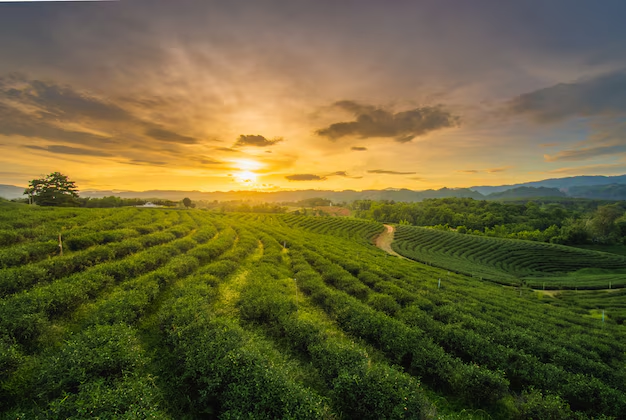The Earth, with its vast array of life, landscapes, and environments, is akin to a symphony. Each part, whether it be a forest, ocean, or desert, plays its role in maintaining the balance of the planet’s ecosystems. This interconnectedness is not just a beautiful metaphor; it is a vital reality. The Earth’s ecosystems are complex networks of living organisms—plants, animals, fungi, and microorganisms—that interact with each other and their physical environment. This interaction forms a delicate balance that sustains life, regulates climates, and purifies the air we breathe and the water we drink.
In this article, we will explore the intricate harmony within Earth’s ecosystems and why understanding this balance is essential for both environmental sustainability and human survival.
The Building Blocks of Earth’s Ecosystems
An ecosystem is defined as a community of living organisms interacting with one another and their environment. Every ecosystem, whether it’s a tropical rainforest or a coral reef, is composed of biotic components (living organisms) and abiotic components (non-living elements like water, air, and minerals). The harmony between these components creates the foundation for life on Earth.
- Producers
At the base of every ecosystem are producers, also known as autotrophs. These are plants, algae, and some bacteria that convert sunlight or inorganic materials into food through processes like photosynthesis. They form the foundation of the food chain and provide energy for all other organisms. - Consumers
Consumers, or heterotrophs, rely on producers for food. Herbivores, omnivores, and carnivores all play different roles in the food web. Herbivores feed directly on plants, omnivores eat both plants and animals, and carnivores feed on other animals. These consumers maintain population control and help regulate the abundance of species in an ecosystem. - Decomposers
Decomposers, such as fungi, bacteria, and earthworms, are vital players in an ecosystem. They break down dead organic matter, recycling nutrients back into the soil and making them available for plants. Without decomposers, ecosystems would quickly run out of essential nutrients, disrupting the entire balance. - Abiotic Factors
Abiotic factors like temperature, water, light, and soil composition also influence the structure and function of ecosystems. For example, the amount of sunlight an area receives determines the types of plants that can grow there, which in turn affects the animals that can live in that ecosystem.
The Harmony of Earth’s Ecosystems
Just like an orchestra, where every instrument plays a specific role in creating a harmonious piece of music, every species in an ecosystem plays a specific role in maintaining ecological balance. Here’s how the harmony unfolds:
- Interdependence of Species
Every species in an ecosystem depends on others for survival. For instance, bees pollinate flowers, which allows plants to reproduce, and in turn, the plants provide food and shelter for animals. The removal of one species from an ecosystem can have a ripple effect, disrupting the balance of the entire system. This interdependence fosters biodiversity, which is crucial for ecosystem stability. - The Role of Predation and Competition
Predation and competition are natural mechanisms that regulate population sizes and contribute to the balance of ecosystems. Predators help control the population of prey species, preventing overgrazing and overconsumption of plant life. Likewise, competition between species for resources such as food and shelter helps to prevent any single species from dominating the ecosystem. - Natural Cycles and Feedback Loops
Ecosystems are governed by natural cycles, such as the water cycle, carbon cycle, and nitrogen cycle, which ensure the continued movement of nutrients through the system. These cycles work together to maintain equilibrium. For example, plants absorb carbon dioxide during photosynthesis and release oxygen into the atmosphere, while animals, in turn, breathe in oxygen and exhale carbon dioxide, maintaining a balanced atmosphere. - Resilience of Ecosystems
An important characteristic of nature’s symphony is the resilience of ecosystems. Ecosystems can recover from disturbances, such as wildfires or floods, through a process known as ecological succession. After a disturbance, ecosystems undergo a series of stages, from bare soil to a fully developed community of plants and animals, until they return to a state of equilibrium.
The Impact of Human Activity on Nature’s Harmony
While nature has its built-in mechanisms for balance, human activity has disrupted many of Earth’s ecosystems. Deforestation, pollution, overfishing, and climate change are just a few examples of human actions that disturb the natural symphony. These activities can result in species extinctions, loss of biodiversity, and the degradation of habitats, causing cascading effects throughout ecosystems.
- Deforestation
Cutting down forests disrupts the delicate balance between producers (plants) and consumers (herbivores, omnivores, and carnivores) that rely on those ecosystems. Deforestation also contributes to climate change by releasing stored carbon into the atmosphere, altering the carbon cycle. - Pollution
Pollution—whether from plastics, chemicals, or waste—can poison ecosystems, killing aquatic life, destroying habitats, and harming the animals that rely on clean water and air. Toxic chemicals in the environment also disrupt reproductive processes in many species, threatening biodiversity. - Climate Change
Climate change is causing shifts in ecosystems, as species are forced to adapt to new temperatures and altered weather patterns. Some species can migrate to more suitable climates, while others may face extinction. Climate change disrupts the natural cycles that have long sustained life on Earth.
FAQs on Nature’s Harmony and Earth’s Ecosystems
- What is an ecosystem? An ecosystem is a community of living organisms interacting with one another and their physical environment, such as water, air, and soil.
- How does biodiversity contribute to ecosystem stability? Biodiversity promotes ecosystem stability by ensuring that species can adapt to changes, prevent any single species from dominating, and contribute to the resilience of the ecosystem.
- What role do decomposers play in ecosystems? Decomposers break down dead organic matter, recycling nutrients back into the soil, which allows plants to absorb them and continue the cycle of life.
- How do human activities disrupt ecosystems? Human activities such as deforestation, pollution, and climate change disrupt ecosystems by altering habitats, decreasing biodiversity, and disturbing natural cycles.
- Why is the balance of ecosystems important? The balance of ecosystems is important because it maintains the health of the environment, sustains biodiversity, and ensures the stability of climate and food sources.
- What is ecological succession? Ecological succession is the process through which ecosystems recover from disturbances, gradually returning to a state of equilibrium over time.
- How can we restore the balance of ecosystems? We can restore ecosystem balance by protecting natural habitats, reducing pollution, conserving biodiversity, and mitigating climate change.
Conclusion
The symphony of nature is a beautiful, delicate balance that sustains life on Earth. From the producers that power ecosystems to the consumers that maintain them and the decomposers that recycle nutrients, every component plays a vital role in keeping the Earth’s ecosystems harmonious. However, human actions have disrupted this natural harmony, leading to environmental challenges such as climate change and biodiversity loss. It is essential for us to recognize the interconnectedness of life and work towards restoring the balance of ecosystems to ensure a sustainable future for generations to come.
Key Takeaways
- Earth’s ecosystems function like a symphony, where each species plays an important role in maintaining balance and harmony.
- Biodiversity is crucial for ecosystem stability, as it ensures adaptability, resilience, and a balanced food web.
- Human activity, including deforestation, pollution, and climate change, threatens the harmony of ecosystems.
- Protecting and restoring ecosystems requires collective efforts in conservation, pollution reduction, and sustainable practices.




